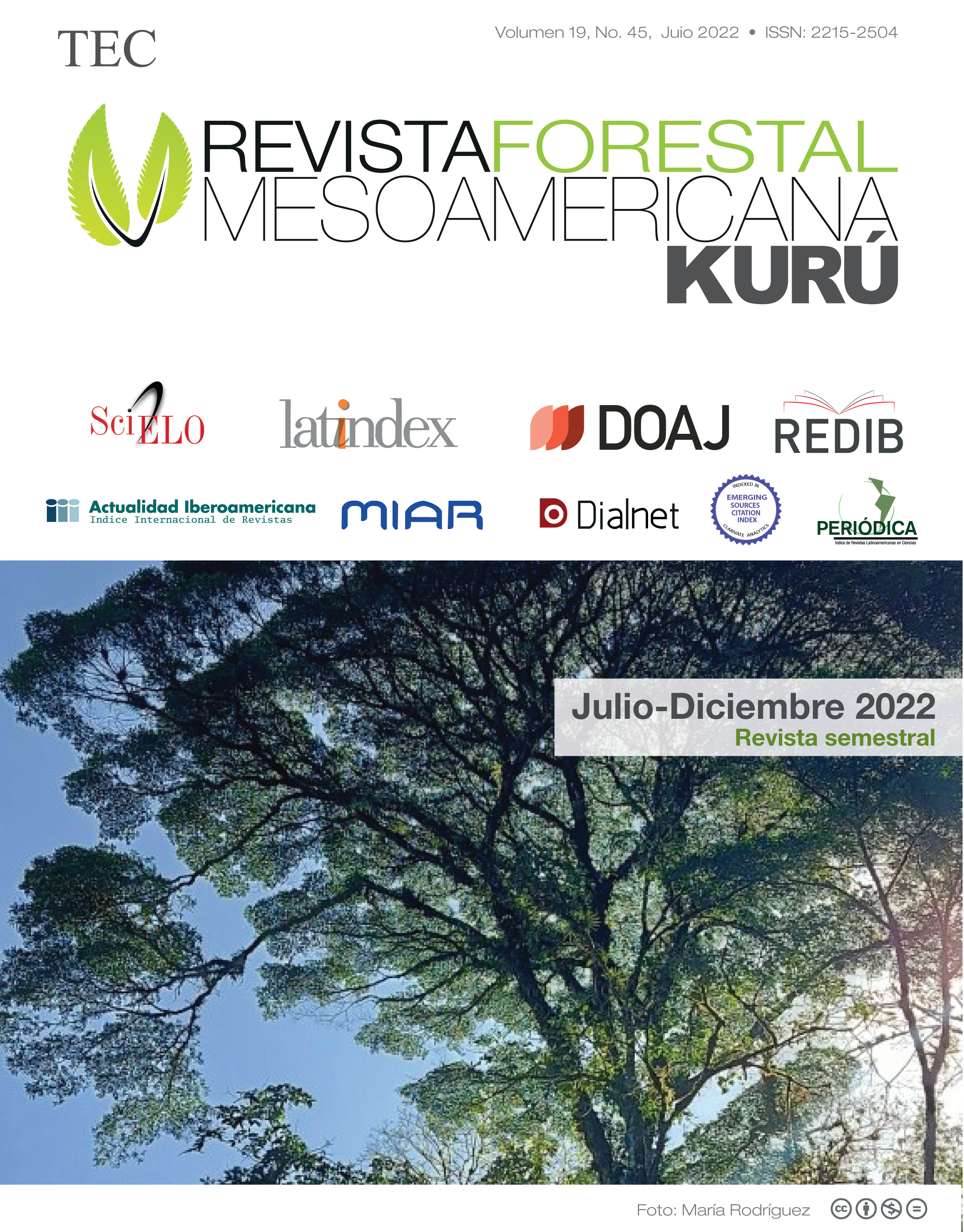Structure and quantification of accumulated garbage in the internal zone of the mangrove swamp of Puntarenas, Costa Rica
Main Article Content
Abstract
Mangrove forest communities are of vital importance due to the diversity of ecosystem services they provide. The objective of this study was to assess the structure and human impact generated in the inner zone of the Estero de Puntarenas Wetland and Associated Mangroves (HEPyMA). The study was carried out in 2017 and 10 monitoring plots of 10 m x 25 m were established in the inner zone of the mangrove forest, on the closest edges to agricultural land. In each plot, a vegetation, physicochemical and litter characterization was carried out. To evaluate the relationship between plots and physicochemical data, Pearson tests, ANOVA and Canonical Ordination Analysis were performed. A total of 217 trees were measured, distributed in 5 species. The complexity index for the whole mangrove was 4.61. In terms of litter, plastics and shoes were the two groups with the highest presence in the mangrove. The HEPyMA is evidence that structurally it is a resilient ecosystem, which has ecological characteristics that favor its high diversity and stability despite the different anthropogenic activities that take place in and around the mangrove. It is possible that the sandy arrow that forms the city of Puntarenas is functioning as a barrier, preventing a greater amount of the rubbish dragged by the sea from entering this sector of the mangrove, and therefore accumulating on the beach, so it is necessary and urgent to take conservation measures in order to avoid irreversible damage.
Article Details

This work is licensed under a Creative Commons Attribution-NonCommercial-NoDerivatives 4.0 International License.
Revista Forestal Mesoamericana Kurú is licensed under CC BY-NC-ND 4.0
Al enviar un artículo a la Revista Forestal Mesoamericana kurú (RFMK), los autores ceden los derechos patrimoniales a la editorial de la RFMK una vez su manuscrito haya sido aprobado para publicación, autorizando a la RFMK a editarlo, reproducirlo, distribuirlo, y publicarlo en formato físico y/o electrónico. La titularidad de los derechos morales sobre los trabajos objeto de esta cesión seguirá perteneciendo a los autores.

